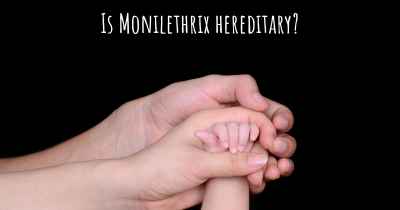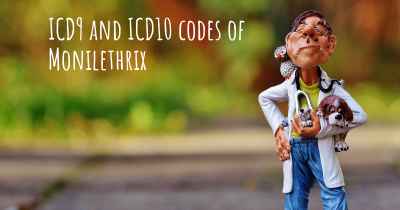What is the history of Monilethrix?
When was Monilethrix discovered? What is the story of this discovery? Was it coincidence or not?

Monilethrix is a rare genetic disorder that affects the hair shaft, resulting in fragile, brittle, and beaded hair. It is characterized by the presence of nodes or constrictions along the hair shaft, giving it a beaded appearance. This condition was first described in medical literature in the early 20th century.
The history of Monilethrix dates back to 1906 when a German dermatologist named Walter Bunch first reported a case of a patient with abnormal hair structure. He observed the presence of nodes along the hair shaft and coined the term "Monilethrix" derived from the Latin words "monile" meaning necklace and "thrix" meaning hair. Bunch's discovery laid the foundation for further research and understanding of this unique hair disorder.
Over the years, several researchers and scientists have contributed to the understanding of Monilethrix. In the 1920s, a British dermatologist named Sir Archibald E. Garrod proposed that Monilethrix is an inherited disorder caused by a genetic mutation. This hypothesis was later confirmed through genetic studies and has become a cornerstone in the understanding of the condition.
Further advancements in the understanding of Monilethrix occurred in the latter half of the 20th century. In the 1960s, electron microscopy techniques allowed researchers to examine the hair shaft at a microscopic level, revealing the structural abnormalities present in Monilethrix. These studies showed that the nodes or constrictions along the hair shaft were caused by a lack of proper keratinization, the process responsible for hair strength and elasticity.
In the 1990s, with the advent of molecular genetics, researchers began identifying specific genes associated with Monilethrix. The first gene linked to the condition was discovered in 1995, known as the "hair keratin gene" or KRT81. Subsequent studies identified other genes, including KRT83 and KRT86, which are also involved in the development and maintenance of hair structure.
Today, the understanding of Monilethrix continues to evolve. Genetic testing has become an essential tool in diagnosing the condition, allowing for early detection and intervention. Ongoing research aims to uncover additional genes and molecular mechanisms involved in Monilethrix, providing further insights into its pathogenesis and potential treatment options.
Despite being a rare disorder, Monilethrix has significant implications for affected individuals and their families. The fragile and brittle nature of the hair can lead to hair loss, scalp infections, and psychological distress. Management of Monilethrix often involves a multidisciplinary approach, including dermatologists, geneticists, and hair specialists. Support groups and online communities have also emerged, providing a platform for individuals with Monilethrix to connect, share experiences, and seek emotional support.
In conclusion, Monilethrix has a rich history that spans over a century. From its initial description by Walter Bunch to the recent advancements in genetic research, our understanding of this rare hair disorder has significantly improved. Ongoing research and collaboration among scientists and medical professionals continue to shed light on the underlying causes and potential treatments for Monilethrix, offering hope for individuals affected by this condition.








